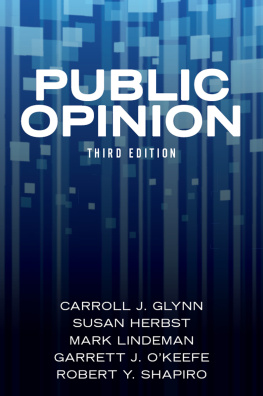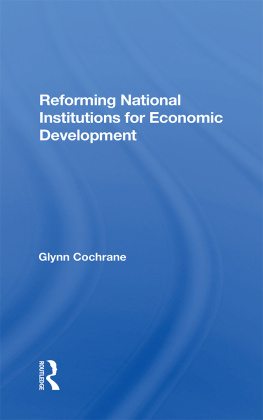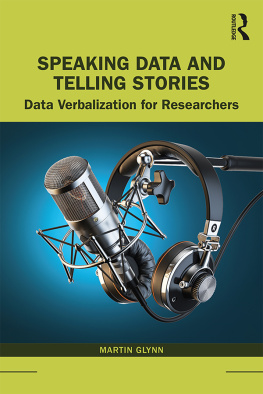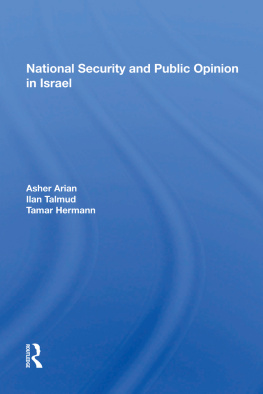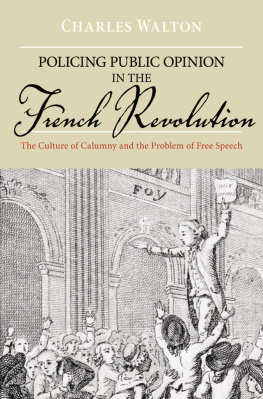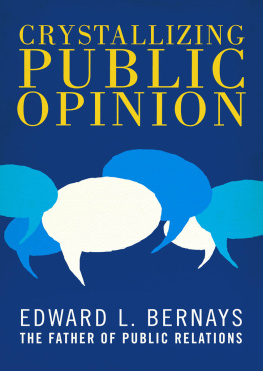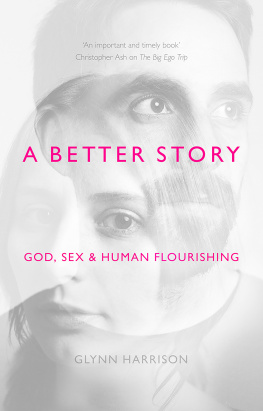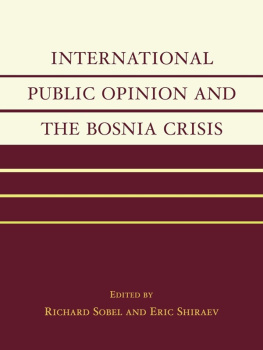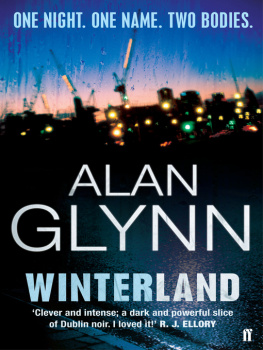Glynn Carroll J. - Public Opinion
Here you can read online Glynn Carroll J. - Public Opinion full text of the book (entire story) in english for free. Download pdf and epub, get meaning, cover and reviews about this ebook. City: United States, year: 2018, publisher: Routledge;Taylor and Francis, genre: Politics. Description of the work, (preface) as well as reviews are available. Best literature library LitArk.com created for fans of good reading and offers a wide selection of genres:
Romance novel
Science fiction
Adventure
Detective
Science
History
Home and family
Prose
Art
Politics
Computer
Non-fiction
Religion
Business
Children
Humor
Choose a favorite category and find really read worthwhile books. Enjoy immersion in the world of imagination, feel the emotions of the characters or learn something new for yourself, make an fascinating discovery.
- Book:Public Opinion
- Author:
- Publisher:Routledge;Taylor and Francis
- Genre:
- Year:2018
- City:United States
- Rating:3 / 5
- Favourites:Add to favourites
- Your mark:
- 60
- 1
- 2
- 3
- 4
- 5
Public Opinion: summary, description and annotation
We offer to read an annotation, description, summary or preface (depends on what the author of the book "Public Opinion" wrote himself). If you haven't found the necessary information about the book — write in the comments, we will try to find it.
Public Opinion — read online for free the complete book (whole text) full work
Below is the text of the book, divided by pages. System saving the place of the last page read, allows you to conveniently read the book "Public Opinion" online for free, without having to search again every time where you left off. Put a bookmark, and you can go to the page where you finished reading at any time.
Font size:
Interval:
Bookmark:

PUBLIC OPINION
THIRD EDITION
PUBLIC OPINION
THIRD EDITION
Carroll J. Glynn
THE OHIO STATE UNIVERSITY
Susan Herbst
UNIVERSITY OF CONNECTICUT
Mark Lindeman
VASSAR COLLEGE
Garrett J. OKeefe
COLORADO STATE UNIVERSITY
Robert Y. Shapiro
COLUMBIA UNIVERSITY

First published 2016 by Westview Press
Published 2018 by Routledge
711 Third Avenue, New York, NY 10017, USA
2 Park Square, Milton Park, Abingdon, Oxon OX14 4RN
Routledge is an imprint of the Taylor & Francis Group, an informa business
Copyright 2016 by Taylor & Francis
All rights reserved. No part of this book may be reprinted or reproduced or utilised in any form or by any electronic, mechanical, or other means, now known or hereafter invented, including photocopying and recording, or in any information storage or retrieval system, without permission in writing from the publishers.
Product or corporate names may be trademarks or registered trademarks, and are used only for identification and explanation without intent to infringe.
Every effort has been made to secure required permissions for all text, images, maps, and other art reprinted in this volume.
Designed by Cynthia Young
A CIP catalog record for the print version of this book is available from the Library of Congress
ISBN 13: 978-0-8133-4940-4 (pbk)
CONTENTS
Coauthored with Lawrence R. Jacobs
TABLES
FIGURES
BOXES
This book began many years ago as a collaborative project among several scholars, all interested in the essential nature of public opinion. We all believe that public opinion is a vital component in the democratic process, and we were drawn to the topic long ago as students. Now, as researchers and teachers, we still think that students of politics and communication should understand how people form opinions, how public opinion is measured, and how the data of public opinion are used in American policymaking and journalism. Without public opinion, we do not have much of a democracy, so how public sentiments are expressed and evaluated is crucial for scholars, students, and citizens alike to understand.
The authors of this volume come from the diverse fields of political science, communications, and journalism; therefore we bring with us a large arsenal of ideas and perspectives. We take an open, interdisciplinary approach to the topic, unlike that applied in most public opinion textbooks. We look at public opinion on the macrohistorical level, the institutional level, the level of small group interaction, and the micropsychological level. We are interested in how Americans come to have opinions in the first place, how the media enable or prevent the formation of certain attitudes, and how our leaders acknowledge or fail to acknowledge the public mood regarding various policies. There are a great many moments when public opinion matters, so we study public opinion dynamics during campaigns and between them. Public opinion generally is most obvious during election campaigns or national crises, but here we pay close attention to day-to-day attitude formation with regard to issues on the contemporary scene. You will find, as you read through this wide-ranging book, that Americans attitudes are sometimes stable and at other times malleable, sometimes liberal and at other times conservative. We hope that you come away from this book with a new appreciation for the complexities of public opinion.
This book was an enormous, although also very gratifying, undertaking. We have many people to thank, although a few stand out for their relentless and good-natured support. We would like to thank Jill Edy and Bruce Williams for their contributions to the first edition, many of which remain in this edition. The discussion of policymaking in . We thank the many people who have commented extensively on the manuscript at various stages, including: Barbara Bardes, Charles Cameron, Jack Citrin, Rosalee Clawson, Serban Iorga, Ted Jelen, Noah Kaplan, Martha Kayler, Franco Mattei, David Park, Greg Shaw, and Oscar Torres-Reyna. At Westview Press, we are grateful for Ada Fungs guidance and yeoman editorial efforts and for Amber Morriss expert attention to manuscript preparation.
Once again, we celebrate the families who have sustained us and enriched our lives through the years and editions of this project. Many thanks to our significant others: Thomas Conrad, Doug Hughes, Nancy B. Rubenstein, the late Mary Lucy DeFlorio, Jane Viste, and Lucy Miller. And to all of our children: Biru, Patric, Ryan, Daniel, Becky, Margaret, and Harriet.
CHAPTERS
Public opinion is endlessly discussed in American politics and culture. The president, members of Congress, candidates for public office, interest group leaders, journalists, and corporate executives, as well as ordinary citizens, routinely ask: What does the public think? Political leaders need to know what sorts of policies and initiatives voters support, but other groups and individuals also need a working knowledge of public opinion. Interest group leaders must decide which battles to wage and how best to mobilize potential supporters. Journalists, who are key players in measuring and communicating public opinion, strive both to inform those of us who are curious about our fellow citizens attitudes and to understand what their audience wants. Corporate executives must pay attention to trends in American culturewhat consumers think about, what they purchase, and generally, how they choose to live.
How can all these partiesand the rest of usobtain information about American public opinion? There are many sources. Perhaps the most obvious indicator of public opinion is the sample survey or opinion poll. Quantitative data from surveys can often give us a sense of how Americans feel about policy issues, social practices, or lifestyle issues. The results of elections and referenda sometimes reveal citizens preferences in very dramatic ways; it is often said that an election is the only poll that matters. Yet students of American politics must go beyond these obvious techniques and consider all of the places that peoples opinions can be found: in the scripts of television programs; at political rallies, town meetings, or city council hearings; in the rhetoric of journalism; in the dialogue among friends who frequent a coffeehouse or neighborhood bar; in the political discussions one sees on the Internet and on social media or hears on talk radio. This book takes a broad view of what the phrase public opinion really means. To focus on survey results alone is to miss most of the story.
Three key terms summarize the concerns of this text: politics, communication, and social process. What do we mean by these words? Politics, in the context of this book, refers to the ways Americans govern ourselves and implement public policy. Our discussions of public opinion in politics go far beyond campaigns. Political campaigns do often attract close attention toif not obsession withevery shift in the horse race for public support. The role of public opinion in policy debates receives less (although still considerable) media coverage, but may be even more important. Even politicians who claim not to care much about public opinion often watch closely for insight into how to present their policy proposals or which proposals are better not presented at all.
Although the connections between public opinion and politics are widely studied,
Font size:
Interval:
Bookmark:
Similar books «Public Opinion»
Look at similar books to Public Opinion. We have selected literature similar in name and meaning in the hope of providing readers with more options to find new, interesting, not yet read works.
Discussion, reviews of the book Public Opinion and just readers' own opinions. Leave your comments, write what you think about the work, its meaning or the main characters. Specify what exactly you liked and what you didn't like, and why you think so.

